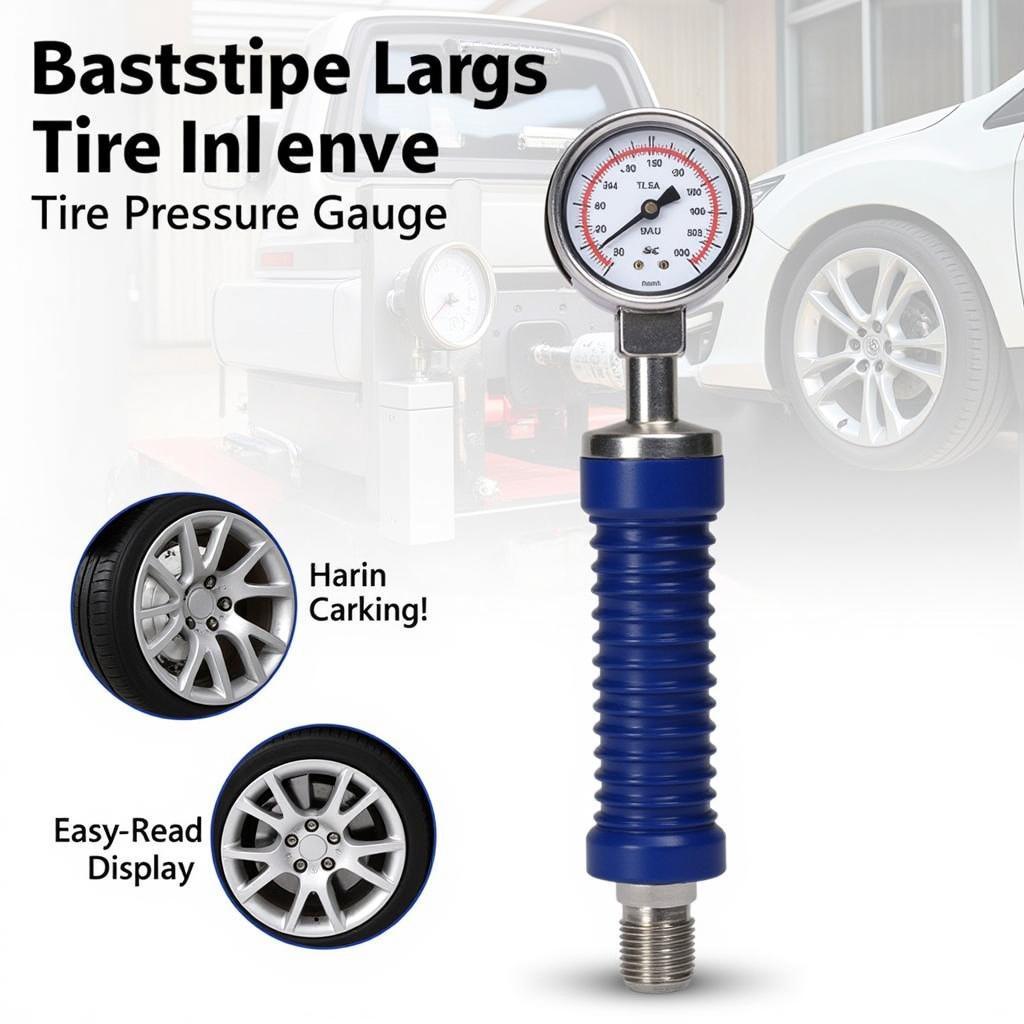Car pulling to one side can be a frustrating and potentially dangerous issue. While several factors can cause this, incorrect air pressure is often overlooked. This article will guide you on How To Fix Car Pulling With Air Pressure, covering everything from diagnosis to solutions, ensuring a safer and smoother driving experience. Understanding how tire pressure affects your vehicle’s handling is crucial for maintaining optimal control and safety.
Have you ever noticed your car drifting slightly to one side, even on a straight road? It’s a common problem, and surprisingly, the culprit might be as simple as uneven air pressure in your tires. how to fix the air pressure in a car can help you understand the basics of maintaining correct tire pressure. This seemingly minor detail plays a significant role in your vehicle’s handling, fuel efficiency, and tire longevity.
Understanding the Impact of Air Pressure on Car Pulling
Uneven tire pressure creates an imbalance in the contact patch—the area where the tire meets the road. A tire with lower pressure has a larger contact patch, creating more rolling resistance and a tendency for the car to pull towards that side. Conversely, a tire with higher pressure has a smaller contact patch, reducing rolling resistance and potentially causing the car to pull away from that side.
 Car Pulling Due to Uneven Tire Pressure
Car Pulling Due to Uneven Tire Pressure
Diagnosing Air Pressure Issues
Checking Your Tire Pressure
The first step in addressing car pulling is to check your tire pressure. Use a reliable tire pressure gauge and refer to the sticker located on your driver’s side doorjamb or your owner’s manual for the recommended pressure for your specific vehicle. Don’t rely solely on the tire pressure monitoring system (TPMS) as it primarily alerts you to significant pressure drops.
Identifying Other Potential Causes
While uneven tire pressure is a common cause, car pulling can also stem from other issues like misaligned wheels, worn suspension components, or even a stuck brake caliper. If adjusting your tire pressure doesn’t resolve the issue, it’s crucial to consult a qualified mechanic for a thorough inspection.
How to Fix Car Pulling Caused by Air Pressure
Adjusting Tire Pressure
Once you’ve identified uneven tire pressure, inflate or deflate your tires accordingly to match the recommended pressure. It’s essential to adjust all four tires, not just the ones with incorrect pressure.
 Adjusting Car Tire Pressure with Gauge
Adjusting Car Tire Pressure with Gauge
Regular Tire Pressure Checks
Make it a habit to check your tire pressure regularly, ideally at least once a month. Fluctuations in temperature can affect tire pressure, and regular checks ensure optimal performance and safety. Consider investing in a portable tire inflator for easy adjustments on the go.
Preventing Car Pulling Related to Air Pressure
Maintaining proper tire pressure is the best way to prevent car pulling. Regularly check and adjust your tire pressure, especially before long trips. Also, be mindful of potholes and other road hazards that can damage your tires and affect their pressure. Sometimes, even fixing a dent with compressed air can inadvertently affect tire pressure. Learn more about how to fix a car dent with compressed air.
how to fix a car dent with compressed air provides detailed information about this process.
Also, be aware of alternative methods like fix car dent with hair dryer and compressed air.
“Regular tire pressure checks are just as important as oil changes,” says John Smith, a certified automotive technician with over 20 years of experience. “They not only prevent car pulling but also improve fuel efficiency and extend tire life.”
 Tire Pressure Gauge and Inflator
Tire Pressure Gauge and Inflator
Another common issue that can affect your car’s performance is a malfunctioning AC condenser fan. Learn how to troubleshoot and fix this problem in our guide on how to fix car ac condenser fan.
Conclusion
Addressing car pulling caused by air pressure is a simple yet crucial step in ensuring a safe and comfortable driving experience. By understanding the impact of tire pressure, regularly checking and adjusting it, and addressing any other potential issues, you can maintain optimal vehicle control and prevent unnecessary wear and tear on your tires. Remember, regular maintenance is key to a smooth and safe ride. Don’t hesitate to contact us at AutoTipPro at +1 (641) 206-8880 or visit our office at 500 N St Mary’s St, San Antonio, TX 78205, United States, for any further assistance.
FAQ
-
How often should I check my tire pressure? At least once a month and before long trips.
-
What is the recommended tire pressure for my car? Check the sticker on your driver’s side doorjamb or your owner’s manual.
-
Can overinflated tires cause car pulling? Yes, overinflated tires can reduce the contact patch and cause pulling.
-
What other problems can cause car pulling besides tire pressure? Misaligned wheels, worn suspension components, and a stuck brake caliper.
-
How can I tell if my car is pulling due to tire pressure? Check your tire pressure with a reliable gauge and look for discrepancies between tires.
-
Is it safe to drive with uneven tire pressure? No, it can compromise handling and lead to uneven tire wear.
-
Should I use the TPMS as my primary method for checking tire pressure? No, the TPMS is designed to alert you to significant pressure drops, not minor fluctuations.





Leave a Reply